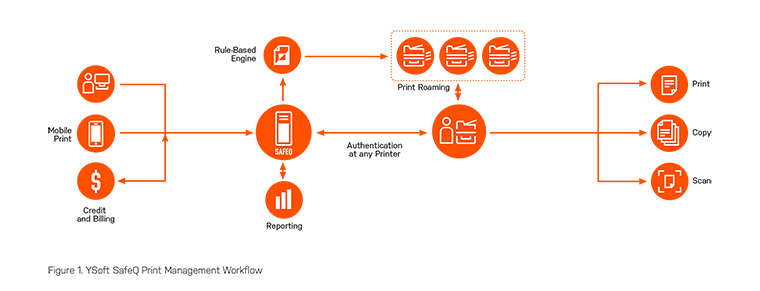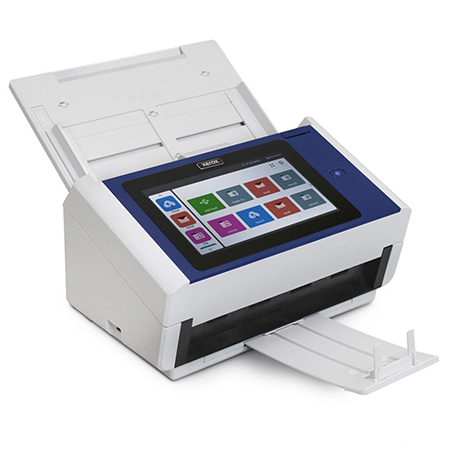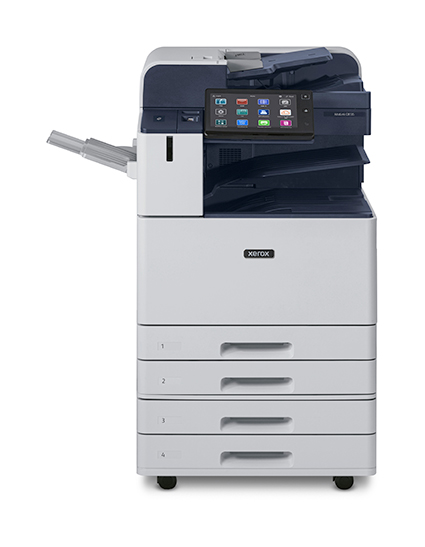
Did you know that people lose 7.5% of all paper documents? Although this may not sound like a lot, it accounts for a vast number of lost documents.
This is a big problem, especially for small businesses, as paying for the labor to recover one misfiled paper document can be costly. Paper waste must be managed because the loss of paper means your business is losing money.
So, how do we solve this problem?
One way to solve the problem is going paperless.
Going paperless can offset the business expenses of losing paper documents. It also has the added benefit of being good for the environment. On average, offices in the U.S. use 12.1 trillion sheets of paper a year. Those are a lot of trees getting cut down! So, in addition to saving money, you can also help dimmish deforestation by going paperless. Sustainable and environmentally conscious workplaces tend to make green by being green.
Plus, having the reputation of being an eco-friendly paperless office can help increase your sales and make your company more appealing to customers.
So, how do you go paperless? You can do several things to make your office greener, and it’s not as difficult as it may seem. As a top-rated print vendor in the North Texas and DFW area, STPT has helped many small businesses go green by practicing environmentally friendly printing and scanning. In this blog, we’ll share five essential steps you can take to start going paperless.
After reading this article, you'll know how to go paperless, which tools can help you, and how STPT can assist in achieving your paperless office goals.
Table of Contents
- What Does It Mean to Be Paperless?
- Step 1: Track Your Paper Use
- Step 2: Digitize Your Files to Reduce Paper Waste
- Step 3: Get Document Management Software
- Step 4: Backup Your Data
- Step 5: Make Use of Apps
What Does It Mean to Be Paperless?
To be paper-free doesn’t mean you’ll eliminate all paper use. After all, many industries, such as healthcare and education, still heavily rely on physical documents. Instead, it focuses on reducing the amount of paper you use daily. For offices and businesses, this can be easier said than done. However, as our world increasingly turns digital, going paper-free only becomes more accessible. It’s essential to know how you can utilize technology to help you be paperless and sustain it for the long term.
In the upcoming sections, we will guide you through the process.
Step 1: Track Your Paper Use

To determine how ready your office is to go paperless, start by looking at how much paper you currently use. This means checking how much paper your printer, coworkers, and office go through every day.
If your office doesn’t currently have a way to track all your documents and paper use, then it’s a good idea to consider one. Below, we’ll go over two ways you can track paper use related to your printer.
Using Managed Print Services to Go Paperless
Many offices that print a lot opt for Managed Print Services (MPS). MPS helps you easily track and control your printer and scanner usage. It can identify old and ineffective printers, unnecessary print jobs, and how much paper your printers use. It also helps you go paperless by highlighting areas where you can reduce printing and its associated costs (such as toner/ink and paper).
A print vendor typically offers MPS and its benefits and cost can vary depending on your chosen provider. For instance, at STPT, we use eValet, which provides an easy-to-access app to view all your devices at once.
In addition, MPS provides helpful tools for monitoring and improving your company’s environmental sustainability.
Plus, you can save money and energy by using features like auto-shutoff. This tells the machine to turn off automatically when not in use, reducing power consumption for printers and scanners.
Are you still weighing the pros and cons of Managed Print Services with STPT? Check out our blog: Is Managed Print Services Right for Your Business? (Pros and Cons) for more information.
Print Management Software
An alternative to MPS is print management software. Some businesses prefer using a combination of MPS and separate print management software, often provided by a single print vendor. This type of software offers more control and in-depth tracking of print usage and functions. Two popular options are Y-Soft and PaperCut:
Learn about the cost of print management software here.
Y-Soft Enterprise Suite
Y-Soft offers benefits like print authentication, cost control, and analytics through its SafeQ Enterprise Suite.
This suite allows centralized management of all machines, enables departmental or individual printer usage analysis, and helps create print management rules to reduce waste and costs. Y-Soft's US headquarters in the DFW metroplex ensure prompt service support for local customers.

PaperCut
PaperCut is one of the most well-known and highest-ranked print management systems in the industry.
One of its most popular features is its "find-me" printing feature. This allows users to print from any device and release their print jobs to the nearest printer. PaperCut secures all your devices, helping you reduce costs and decrease your company’s negative environmental impact.
Check out our blog Print Management Software Y-Soft vs. PaperCut for a more thorough breakdown of the similarities and differences between the two software options.
Assessing your office’s current printing practices before going paperless is important. You need to determine how much paper you use and how much is needed for the operation of your business.
Step 2: Digitize Your Files to Reduce Paper Waste
Is your office as paperless as it could be?
Offices commonly deal with stacks of paper, from receipts to reports. One effective way to reduce paper waste is to digitize both existing and incoming physical documents. This involves converting paper documents into digital files and adopting digital solutions for various office practices to minimize paper usage. Here are some common ways to transform paper documents into digital ones and embrace paperless practices:
- Paperless signatures: Implement electronic signature tools like DocuSign, Adobe Sign, or HelloSign for paperless signatures. These platforms allow for secure and legally binding document signatures without printing, signing, and scanning.
- Digital Receipts: Opt for digital receipts using tools like Square, Shopify, or your point-of-sale (POS) system’s email receipt feature. Many businesses now offer the option to email receipts directly to customers.
- Digital Invoicing & Billing: To send invoices electronically, use digital invoicing platforms like QuickBooks, FreshBooks, or Xero.
- Digital Faxing: Replace traditional fax machines with online fax services like eFax, MyFax, or Fax. Read our blog on how to fax without a fax machine here.
Use Quality Scanners or Multifunction Printers
An important aspect of digitizing your documents is finding a quality scanning device that suits your company’s needs.
When a company we work with says, "We are digitizing our office and going paperless," our first suggestion is to invest in a quality scanner or a multifunction printer (MFP) with scanning capabilities. Utilizing a scanner or an MFP is essential in an office that handles a large volume of paper, as these devices can quickly convert hundreds of physical documents into digital files.
Xerox offers a variety of multifunction printers and scanners for office use, so we have narrowed down a few good options for you to consider:
For a small office or business, consider the Xerox N60w scanner, which offers USB, Ethernet, WiFi connectivity, and touchscreen operation.

If your company scans a significant amount of paper daily, consider the Xerox W130 scanner in the production category. It’s the fastest Xerox scanner and is known for its speed and efficiency.
For more information on scanner types, check out our blog, Which Xerox Scanner is Right For Me?
Some businesses prefer a device that can perform multiple duties, including printing and copying. Legal and medical offices, for example, are often required to maintain some paper documents for specific periods of time before properly disposing of them.
Here is one of our MFP recommendations:
- Xerox AltaLink C8100 Series
Called “the ideal digital workplace assistant for demanding teams,” the AltaLink C8100 Series models are the perfect Xerox machines for heavy-duty scanning, printing, and copying.
With an arsenal of helpful apps, the AltaLink C8100 Series printers are made to automate document workflows.

Xerox also offers Capture and Content Services, which digitizes physical documents on a large scale. This is great for businesses that don’t have the space or time to scan all the documents they need manually. They even purge and destroy old or unwanted documents.
By integrating these digital and technological solutions, you can significantly reduce paper waste and create a more efficient, streamlined, and environmentally friendly office.
Step 3: Get Document Management Software
The next step to going paperless involves organization.
So, you now have a way to track paper use and know how to digitize your physical documents. However, you also need a system to organize and manage your digital documents for easy retrieval. All your digital files should go into one centralized location so that you can easily access them when needed.
That’s where document management software comes in. Also known as document management systems (DMS), these work like an old filing cabinet you use to store paper documents, only they’re much more efficient, easier to navigate, and don’t take up prime office space. Essentially, they’re like digital filing cabinets.
To successfully go paperless, you need to organize your documents by storing the information and using software to manage document creation and printing. Document management software enables you to create and maintain digital workflows, which is vital to upholding your paperless initiatives.
When searching for a good DCM, among several factors, you must consider how well it incorporates into your existing workflow and business. Also, look for good search functions that will allow you to easily search for and retrieve the files you want. Here are a couple of popular document organization software worth looking into:
Xerox DocuShare
DocuShare is a cloud-enabled service that can help you manage digital documents. It is called an enterprise content management (ECM) platform because it provides easy-to-use tools for digitizing your office documents.
This software provides many benefits for its users, including a mobile-friendly system that lets you tailor the features to match your company’s brand. It also allows access from many devices, like computers, phones, and copiers. For smaller businesses, DocuShare Go provides a simplified version at a more affordable cost.
Microsoft SharePoint
Microsoft SharePoint, like Xerox DocuShare, serves as a repository for team documents. Like an infinite digital filing cabinet, this software creates a secure and organized space for document storage that can be accessed by members of your company’s team from any device with a web browser.
SharePoint consists of several different applications designed with the same purpose: organizing digital documents.
SharePoint is available in several versions or products, including SharePoint in Microsoft 365, a cloud-based repository. The on-premise option, SharePoint Server, launches its own server on-site for your business or uses Microsoft 365 Enterprise to perform the same function.
OneDrive sync and Microsoft Teams are additional options that offer some of the same capabilities in smaller, inexpensive packages.
Step 4: Backup Your Data
Backing up your data is important no matter what! However, it is especially important for companies that heavily depend on digital documents. Whether you are digitizing physical papers or working with existing digital files, it is essential to ensure the security and backup of your data.
Losing a document that contains vital information can negatively impact your business and cost you money, so it is best to use multiple backups.
When storing digital data, it is best to have at least one cloud-based backup and another physical copy backed up to a flash drive or hard drive in case a leak or cyber breach affects the cloud.

So, what are the best cloud storage services for small businesses that are going paperless?
Some popular options for cloud storage include Apple iCloud, Google Drive, Microsoft OneDrive, Microsoft Teams, and Dropbox. According to PC Magazine, less well-known options, like Sync and IDrive, perform well for some users.
The Xerox ConnectApp for Cloud Storage is a good option for cloud-based document storage because it connects easily to your copier/printer and supports other cloud-based services, like Google Drive, Dropbox, and OneDrive.
Make sure the cloud service you use to store your data has strong security measures, such as data encryption, that will diminish the possibility of your information being hacked into or stolen.
Step 5: Make use of Apps
Apps are a great way to stay organized while on the go and facilitate a paperless office. Several apps make going paperless easier, from convenient scanning apps to versatile note-taking apps.
Scanning Apps
When you're far from a printer or need to digitize documents quickly, use document scanning apps on your mobile device. Apps like Adobe Scan, CamScanner, or Microsoft Lens allow you to scan, crop, and edit documents directly from your phone. This is ideal for quickly digitizing and sharing one—or two-page documents. However, for larger quantities, using a dedicated scanner or multifunction printer is more efficient.
For help scanning a document on your iPhone, check out How to Scan a Document Using Your iPhone (Step-By-Step).
Note-Taking Apps
Note-taking apps like Evernote, OneNote, and Notion are excellent tools for reducing office paper usage. These apps allow you to create, organize, and share notes digitally, particularly useful for meetings, brainstorming sessions, and daily task management. Check out our list of the best note-taking apps here.
Don't stress
Going paperless offers significant benefits, including cost savings, improved efficiency, and environmental sustainability. With the right tools and strategies, your business can successfully transition to a paperless office.
It's essential to recognize that what works for one office might not work for yours. The key to going paperless is to create practical, well-defined workflows that won't cause you more trouble or effort. The more complicated you make the process, the less likely it is that you'll stick to it.
We Want to Help!
There are many advantages to going paperless, even for print vendors!
Choosing a local print vendor for your business can help you go paperless. We care as much as you do about achieving your financial and environmental goals.
We can work with you to set up Managed Print Services or Print Management Software for your company. We can also help you find the scanner or all-in-one printer with document scanning services that best fit your business needs.
At STPT, we care about the environment and our customer's needs, so contact us today and let the STPT team help you save money and the environment.
